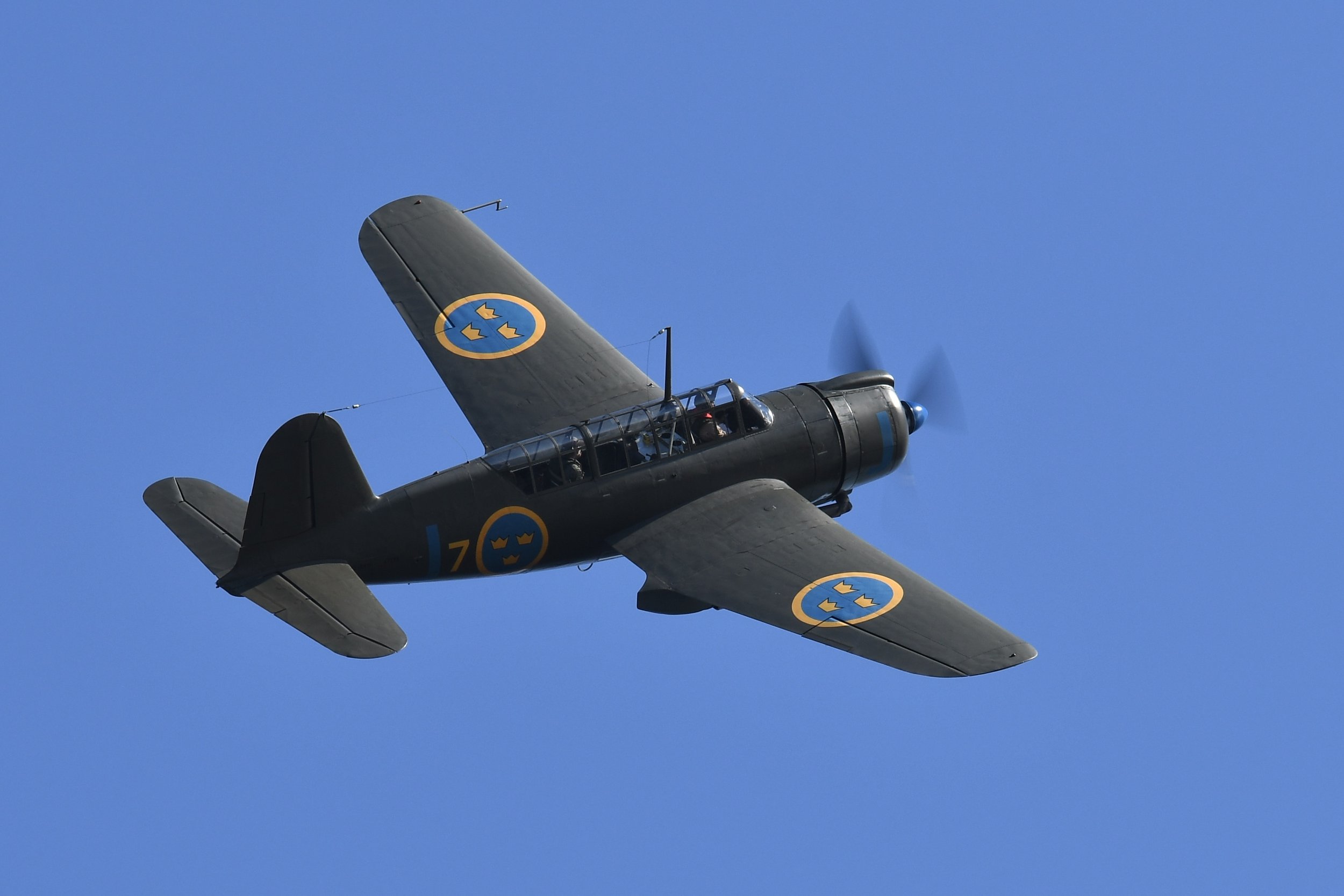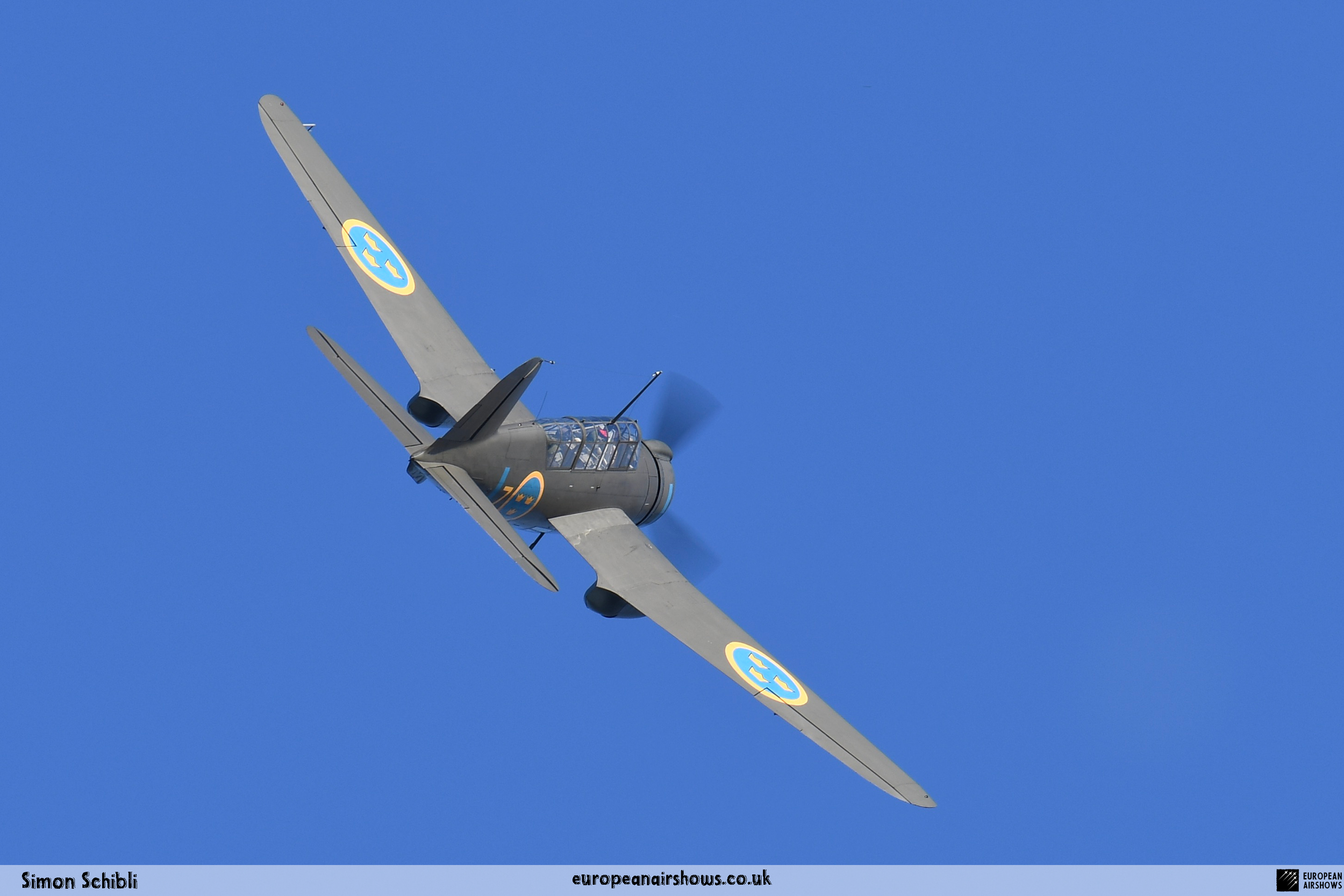
May 18 / Saab 17 first flight
First Flight 18 May 1940
Saab 17
The Saab 17 is a lesser-known aircraft that played a significant role in Sweden’s aviation history during the mid-20th century. Developed by the Swedish aircraft manufacturer Saab, it was a twin-engine reconnaissance and bomber aircraft that served in the Swedish Air Force during World War II.
The Saab 17's origins can be traced back to the early 1940s when the Swedish Air Force required a new reconnaissance aircraft to replace its ageing fleet of biplanes. Saab, which had already established itself as a reputable aircraft manufacturer with the successful Saab 17 biplane, was challenged to develop a modern and capable successor.
Designed by a team led by Frid Wänström, the Saab 17 was a low-wing monoplane with a sleek and aerodynamic design. It was powered by two Pratt & Whitney Twin Wasp radial engines, which gave it a top speed of around 300 mph and a range of over 1,000 miles. The aircraft was equipped with a variety of sensors and cameras for reconnaissance missions and the capability to carry bombs for ground attack missions.
The Saab 17 made its first flight in May 1940 and entered service with the Swedish Air Force in 1942. It quickly proved to be a versatile and reliable aircraft, capable of carrying out a wide range of missions, including reconnaissance, anti-submarine patrols, and ground attacks. During World War II, the Saab 17 was used to patrol Sweden’s coastal waters and monitor German naval activity in the Baltic Sea.
After the war, the Saab 17 continued to serve with the Swedish Air Force until the early 1950s, when it was gradually phased out in favour of more modern aircraft. Despite its relatively short service life, the Saab 17 left a lasting legacy as one of the most successful aircraft produced by Saab during the war years.
In conclusion, the Saab 17 was a key part of Sweden’s aviation history, serving as a versatile and capable aircraft during World War II and beyond. Its advanced design, reliable performance, and adaptability made it a valuable asset to the Swedish Air Force and a testament to Saab’s engineering prowess.
Saab 17 Facts
The Saab 17 was a twin-engine reconnaissance and bomber aircraft developed by the Swedish aircraft manufacturer Saab during World War II.
It made its first flight in May 1940 and entered service with the Swedish Air Force in 1942.
The Saab 17 was designed by a team led by Frid Wänström and featured a low-wing monoplane design with two Pratt & Whitney Twin Wasp radial engines.
Its top speed was around 300 mph, and its range was over 1,000 miles, making it a versatile aircraft for reconnaissance, anti-submarine patrols, and ground attacks.
The Saab 17 was equipped with various sensors, cameras, and the capability to carry bombs for different mission requirements.
During World War II, the Saab 17 was used by the Swedish Air Force to patrol coastal waters and monitor German naval activity in the Baltic Sea.
The Saab 17 served with the Swedish Air Force until the early 1950s, when it was gradually replaced by more modern aircraft.
Despite its relatively short service life, the Saab 17 was considered one of the most successful aircraft produced by Saab during the war years.
The Saab 17’s advanced design, reliable performance, and adaptability made it a valuable asset to the Swedish Air Force and showcased Saab’s engineering capabilities.
The Saab 17 left a lasting legacy in Sweden’s aviation history as a versatile and capable aircraft that contributed significantly to the country’s defence during World War II.




